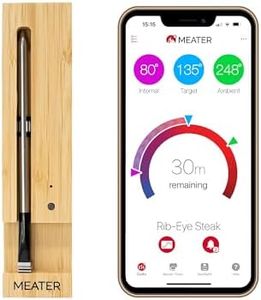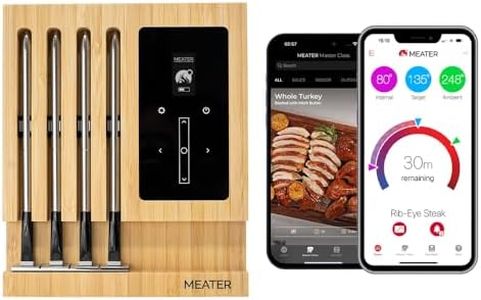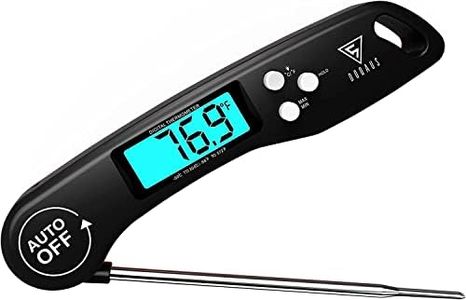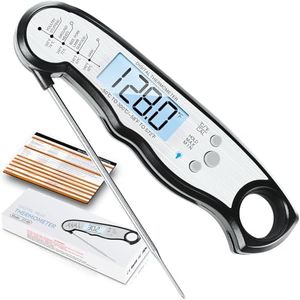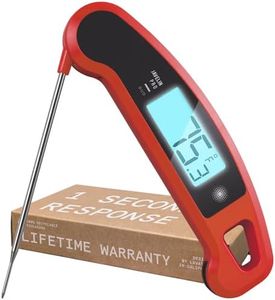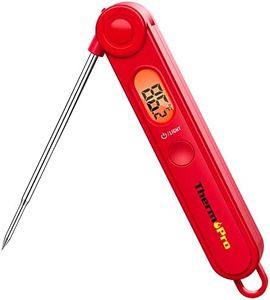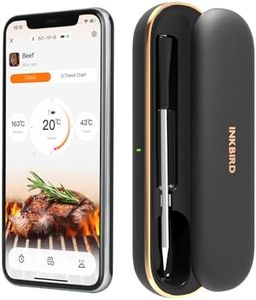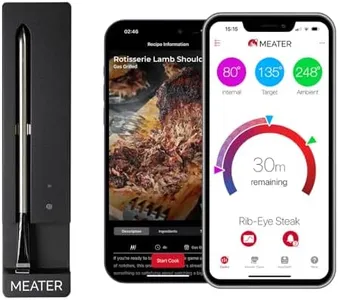We Use CookiesWe use cookies to enhance the security, performance,
functionality and for analytical and promotional activities. By continuing to browse this site you
are agreeing to our privacy policy
10 Best Meat Thermometer Probe
From leading brands and best sellers available on the web.By clicking on a link to a third party's website, log data is shared with that third party.
Buying Guide for the Best Meat Thermometer Probe
When buying a meat thermometer probe, your main goal is to have an accurate, reliable, and easy-to-use device. These thermometers help you make sure your meat is cooked to the perfect temperature for safety and taste. It's important to think about how you usually cook—grilling, oven roasting, or smoking, for example—and select a probe thermometer with features and specifications that match those needs.Temperature rangeThe temperature range is the span of temperatures the probe can measure. This is important because different meats and cooking methods require different levels of heat. For most home cooking, a range that covers slightly below freezing (for things like candy or yogurt) to well above the typical cooking temperature for meats (around 500°F or 260°C) is enough. If you only cook common meats like chicken or beef, a moderate range will do, but if you plan to smoke meats or bake candy, choose a thermometer with a wider temperature span.
AccuracyAccuracy tells you how close the thermometer's readings are to the real temperature. This is crucial for safety, especially with poultry and pork. Thermometers usually promise accuracy within a few degrees (±1–2°F or ±0.5–1°C). For home cooking, a small error is fine, but for advanced recipes like sous vide or smoking, pick a probe with higher accuracy.
Probe length and materialProbe length determines how deep the thermometer will go into the meat. Longer probes are good for big cuts like roasts, while shorter ones are easier to use with thinner cuts or poultry pieces. The material is almost always food-grade stainless steel, which is safe, easy to clean, and resistant to rust. Choose the probe length that fits the types of meat you most often cook.
Type (instant-read vs. leave-in)There are two main types: instant-read and leave-in probes. Instant-read thermometers give a quick temperature after you stick them in, which is great for fast checks but not for monitoring during cooking. Leave-in probes stay in while your food cooks, with a cable or wireless readout so you can watch temperature rise over time. Consider what fits your routine: quick checks with instant-read, or continuous tracking for roasting and smoking with leave-in.
Display and readabilityThe display shows the temperature reading. Large, backlit screens are easier to read, especially if you're cooking outside or in low light. Some displays also rotate for better viewing angles. If you often cook at night or when your hands are full, prioritize a thermometer with an easy-to-read, clear display.
Response timeResponse time is how quickly the thermometer shows an accurate reading. Quicker readings (in a few seconds) are better because you spend less time waiting and can make adjustments faster. If you do a lot of grill or pan work where every second counts, look for a probe known for fast response.
Water resistanceWater resistance means how well your probe can handle splashes or being washed. It matters because cooking can get messy, and cleaning the probe is important for food safety. Some thermometers are just splash-proof, while others can be rinsed under water. If you want easy cleanup, choose one with better water resistance.

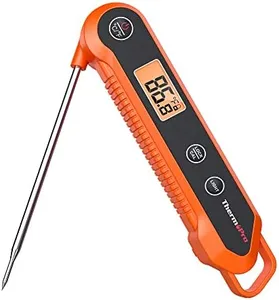
![[New] MEAT](https://images-proxy.bestreviews.guide/AnhXhgk_aSYDJrVANJgGmv6iGjc=/0x300/https://m.media-amazon.com/images/I/41K-AL+1GGL._AC_CX679_.jpg)


